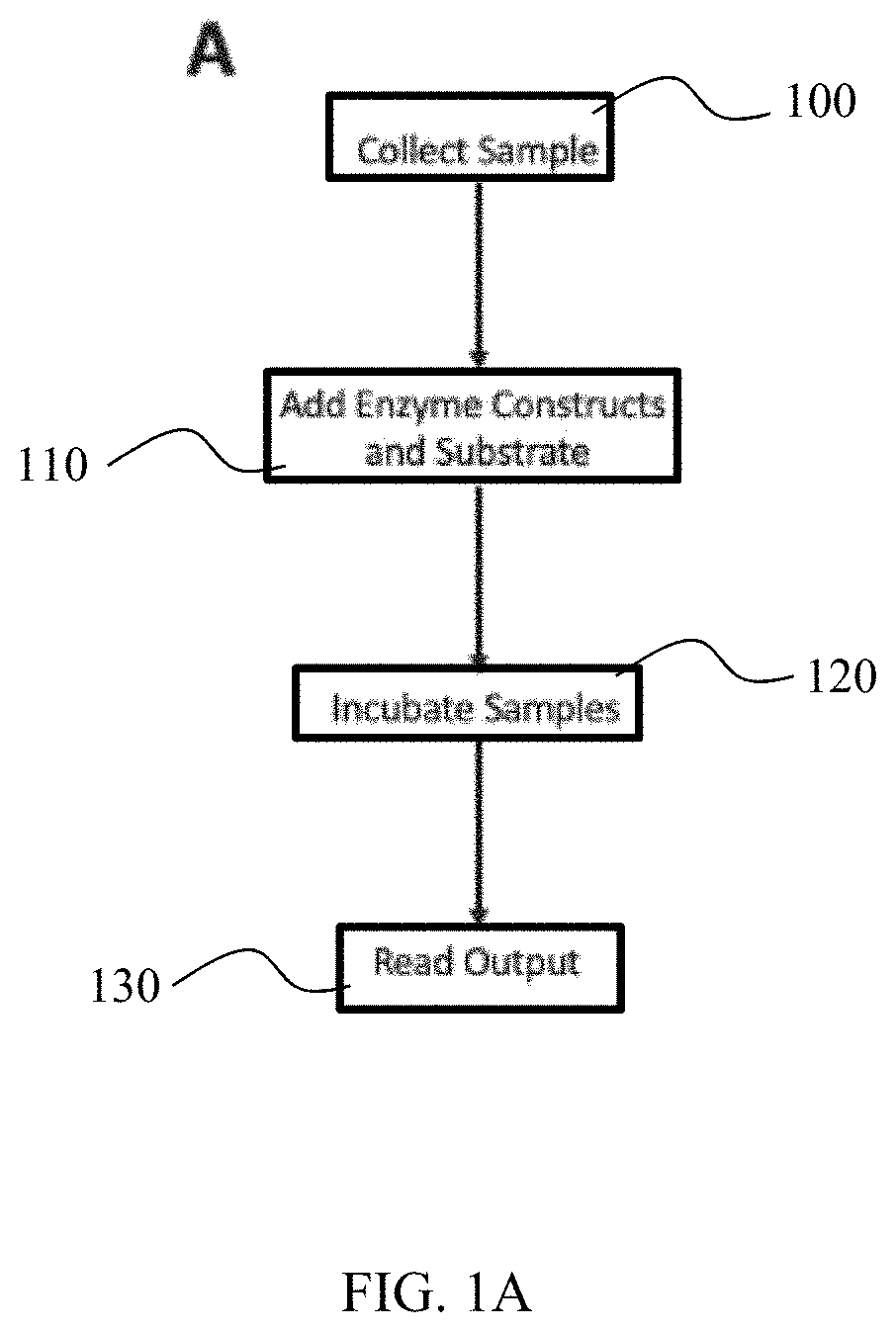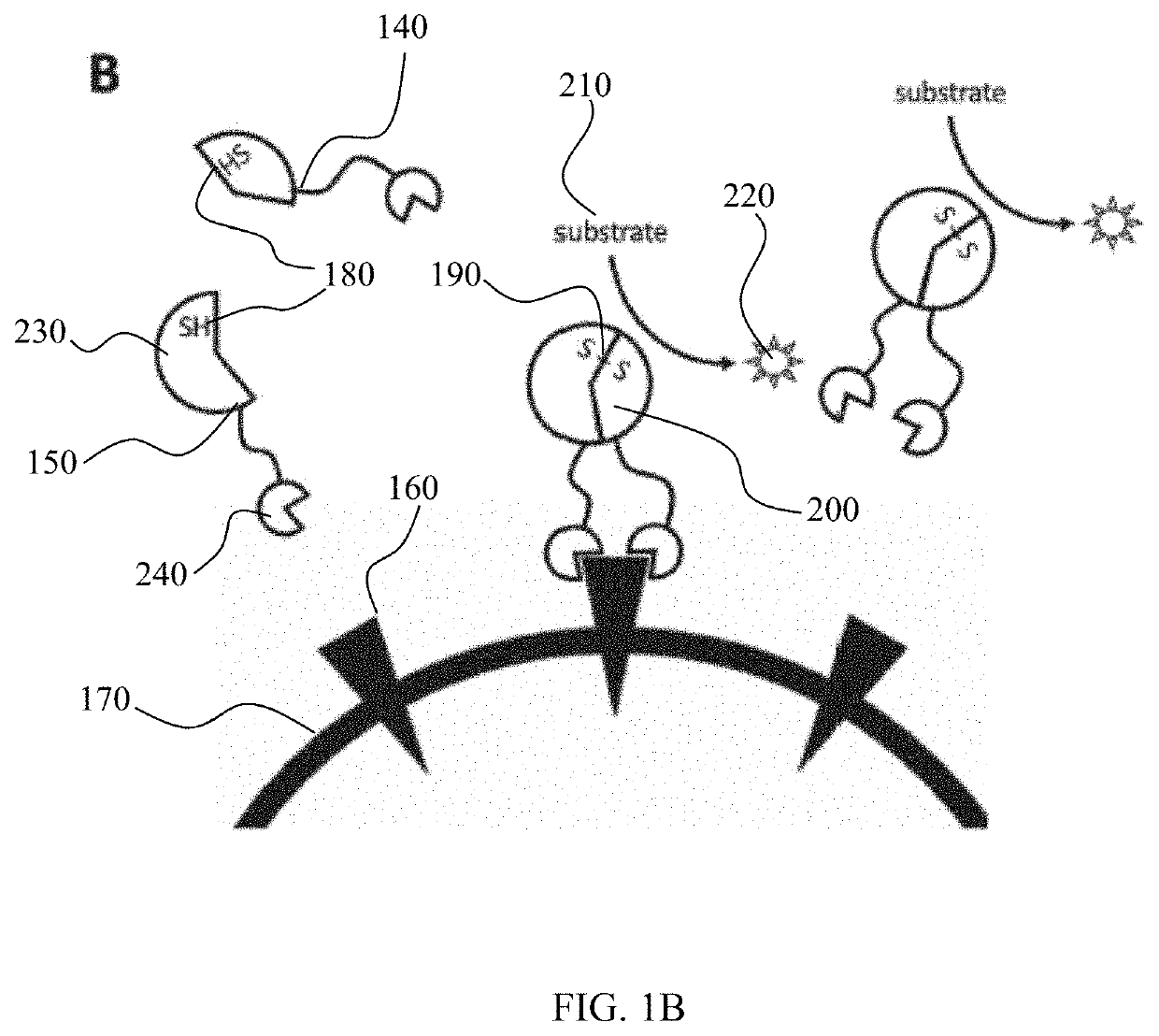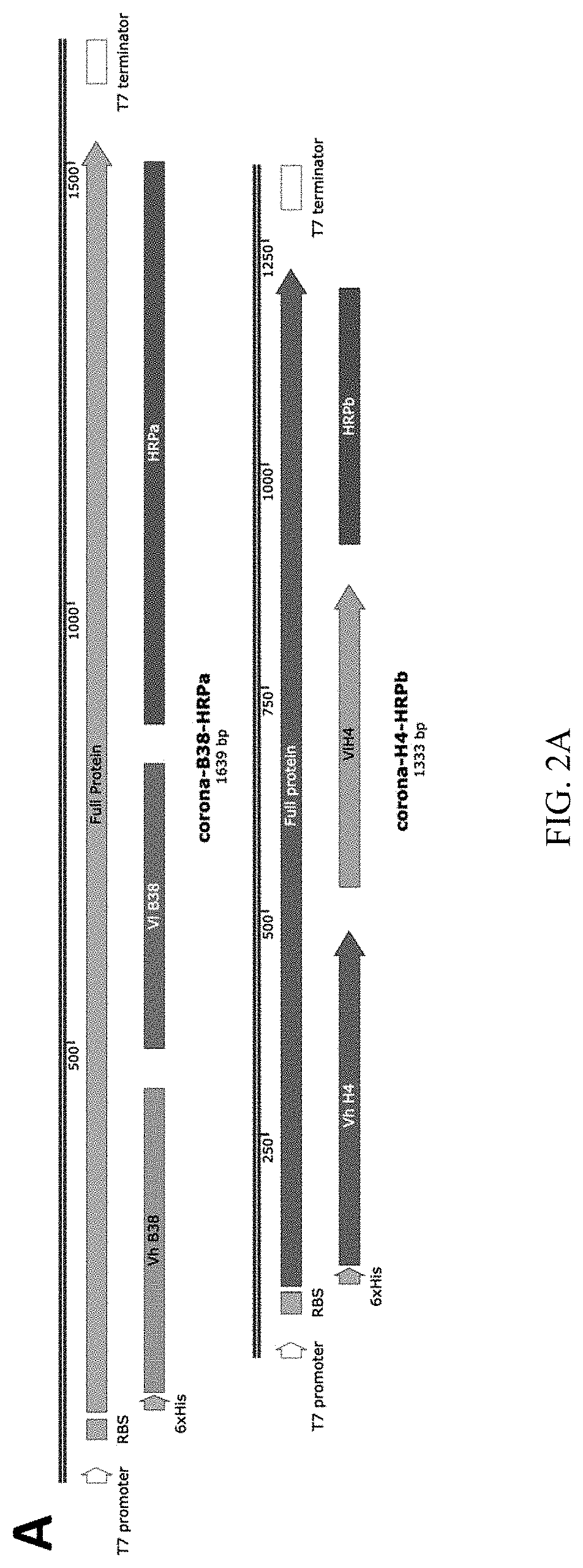Method for detection of viral infections using split enzymes
a technology of split enzymes and viral infections, which is applied in the field of viral infection detection using split enzymes, can solve the problems of slow turnaround time, high cost, and difficult results
- Summary
- Abstract
- Description
- Claims
- Application Information
AI Technical Summary
Benefits of technology
Problems solved by technology
Method used
Image
Examples
example 1
[0064]First, two synthetic proteins were designed and produced to incorporate portions of an HRP enzyme (HRPa and HRPb) previously shown to reconstitute an active enzyme when expressed on the surface of two touching cells. Each HRP portion was linked to an scFv designed from a pair of antibodies isolated from an early COVID-19 patient and shown to noncompetitively bind two epitopes on the viral spike protein. Finally, a 6×His epitope tag was affixed to aid purification and testing of the protein products (FIG. 2A). The proteins were expressed separately in a standard E. coli expression strain (SHUFFLE) and purified using a nickel chromatography column using standard procedures. The appropriate amount of spike protein (R&D Systems) was then mixed with 1 ug of each HRP fragment and incubated at room temperature for 15 minutes. The reaction was then blotted onto a nitrocellulose membrane and allowed to dry. The dried membrane was rewet with TBST and blocked using 5% milk for 30 minutes...
PUM
| Property | Measurement | Unit |
|---|---|---|
| Environmental properties | aaaaa | aaaaa |
Abstract
Description
Claims
Application Information
 Login to View More
Login to View More - R&D
- Intellectual Property
- Life Sciences
- Materials
- Tech Scout
- Unparalleled Data Quality
- Higher Quality Content
- 60% Fewer Hallucinations
Browse by: Latest US Patents, China's latest patents, Technical Efficacy Thesaurus, Application Domain, Technology Topic, Popular Technical Reports.
© 2025 PatSnap. All rights reserved.Legal|Privacy policy|Modern Slavery Act Transparency Statement|Sitemap|About US| Contact US: help@patsnap.com



